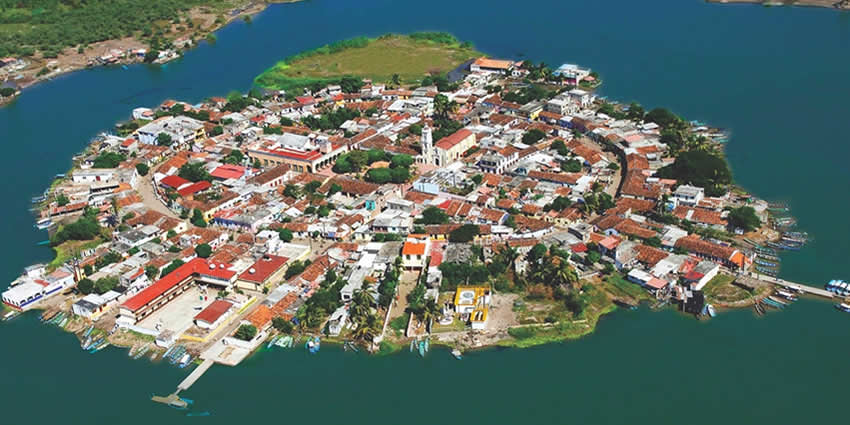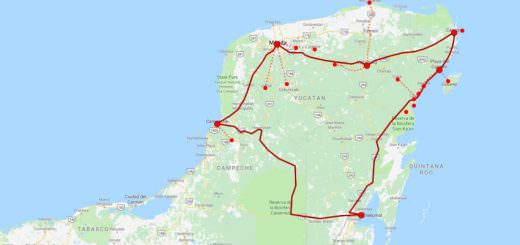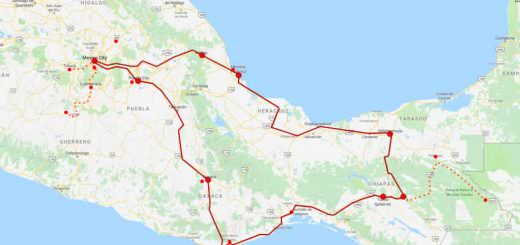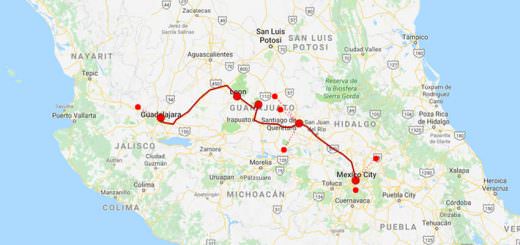
Mexicaltitán de Uribe
Mexcaltitán de Uribe, also known simply as Mexcaltitán, is a unique and picturesque island village. Mexcaltitán de Uribe is a small human-made island city off the coast in the municipality of the Mexican state of Nayarit.
The island is approximately 350 m in diameter and nearly round in shape.
The island is situated within the coastal lagoons of the Riviera Nayarit region. This small island is often referred to as the “Mexican Venice” because of its complex network of canals and charming cobblestone streets.
Mexcaltitán de Uribe is a low-lying island characterized by its marshy terrain and narrow streets. The island’s geographical charm lies in its resemblance to a traditional Mexican pueblo with houses painted in vibrant colors.
The primary means of transportation within the village are footpaths and small boats, which glide through the winding canals that crisscross the island. The local economy primarily relies on fishing, agriculture, and tourism.
Mexcaltitán de Uribe offers a unique and charming escape in Mexico. Its location, distinctive geography, and pleasant climate make it a year-round destination, with different seasons offering varying experiences.
Weather and Climate
The climate in Mexcaltitán de Uribe is influenced by its coastal location.
The island has a tropical wet and dry climate with warm temperatures throughout the year. Daytime temperatures typically range from 25°C to 32°C, while nights are cooler, with temperatures around 15°C to 20°C.
Rainy Season: Mexcaltitán de Uribe experiences a rainy season from June to October. During this time, rainfall is relatively abundant, and the landscape becomes lush and green. The rainy season is ideal for witnessing the island’s natural beauty in full bloom.
Dry Season: The dry season spans from November to May. This period is characterized by less rainfall and more sunshine. The weather is warm and pleasant, making it a popular time for tourists to visit.
Best time to visit Mexcaltitán
The best time to visit Mexcaltitán de Uribe largely depends on your preferences.
Dry Season (November to May): This is the peak tourist season, characterized by pleasant weather and sunshine. It’s an excellent time for exploring the island’s streets, canals, and cultural attractions without worrying about rain.
The calm waters also make it a great time for boat rides.
Rainy Season (June to October): If you want to experience Mexcaltitán de Uribe at its most lush and green, visit during the rainy season. The landscape is vibrant, and you can witness the island’s natural beauty in full bloom.
However, be prepared for occasional rain showers.
Origin of the name
The name “Mexcaltitán” has an interesting origin rooted in Aztec mythology and the Nahuatl language.
It is believed to be derived from the Nahuatl words “mexcalli” and “titlān”, when combined, roughly translates to “in the house of the maguey.” The maguey plant (agave) was of great cultural and economic importance to the Aztecs.
History & Timeline
Pre-Hispanic Era
The island’s history dates back to ancient times when it was inhabited by indigenous peoples, primarily the Cora and Huichol tribes.
These indigenous communities established their settlements on the island due to its strategic location within the coastal lagoon system, which provided abundant resources for fishing and agriculture.
Aztec Influence
This quaint island village is dated to the start of the 12th century.
Mexcaltitán de Uribe is often associated with the legendary birthplace of the Aztec civilization. Mexicaltitán is believed to be the location of the mythical city of Aztlán, the long-lost birthplace of the Aztec civilization.
Legend says this tiny ancient island is the lost Aztlan, from where the Aztecs set out on their pilgrimage in 1091 which led them to the founding of Tenochtitlan (actual Mexico City) in the Valley of Mexico in 1325.
This historical connection adds to the island’s cultural significance.
There is little evidence to support the claim, although the streets of Mexicaltitán are laid out in a circular, cruciform pattern similar to Tenochtitlan, and Aztec mythology does suggest the civilization originated on an island.
This hypothesis is still up for debate.
Spanish Colonization
Like much of Mexico, Mexcaltitán de Uribe was eventually colonized by the Spanish in the 16th century. The island’s strategic location made it an important trade and transportation hub during colonial times.
Tourist attractions & Sightseeing
The principal tourist attraction of the island consists of its colorful houses with traditional water-resistant roofs and during the rainy season, it is necessary to travel by boat due to the major flooding of the streets.
Among many outstanding buildings, the city consists of a museum, a catholic church, the commission of ejido, an elementary school, and a government-operated hospital.
The island has retained its traditional Mexican charm, with narrow cobblestone streets, colorful houses, and a rich cultural heritage.
Mexcaltitán de Uribe celebrates its indigenous and colonial roots through various festivals, including the annual Feast of San Pedro, which features traditional music, dance, and culinary delights.
Despite its small size, Mexcaltitán de Uribe offers a range of activities and attractions for visitors to enjoy:
Explore the Canals: Take a boat ride through the intricate canal system that winds its way through the village. It’s a unique way to see the island and experience its “Venetian” atmosphere.
Visit the Main Square: The town’s central square, Plaza Principal, is a great place to start your exploration. Here, you can find the Church of San Pedro, a historic colonial church with a striking facade.
Enjoy Local Cuisine: Savor traditional Mexican dishes at local restaurants, with a focus on seafood caught fresh from the lagoons. Try dishes like ceviche and pescado zarandeado.
Learn About Aztec History: Visit the Aztec Museum to learn more about the island’s historical connection to Aztec mythology and the early days of the Aztec civilization.
Participate in Festivals: If you visit during a local festival, such as the Feast of San Pedro, immerse yourself in the island’s vibrant culture through music, dance, and traditional foods.
How to get there
The island is accessible by boat from La Batanga, which is the dock area located some 40 km from Santiago Ixcuintla. The island is small and easily walked, and still relatively removed from the tourist trail, accessible only by boat.
The island counts of 2 ferries:
- La Batanga is the most transited, 6 km away from Mexcaltitán.
- El Matadero is smaller than the others, 2 km away from the island.
Let us know if this article was useful for you





















